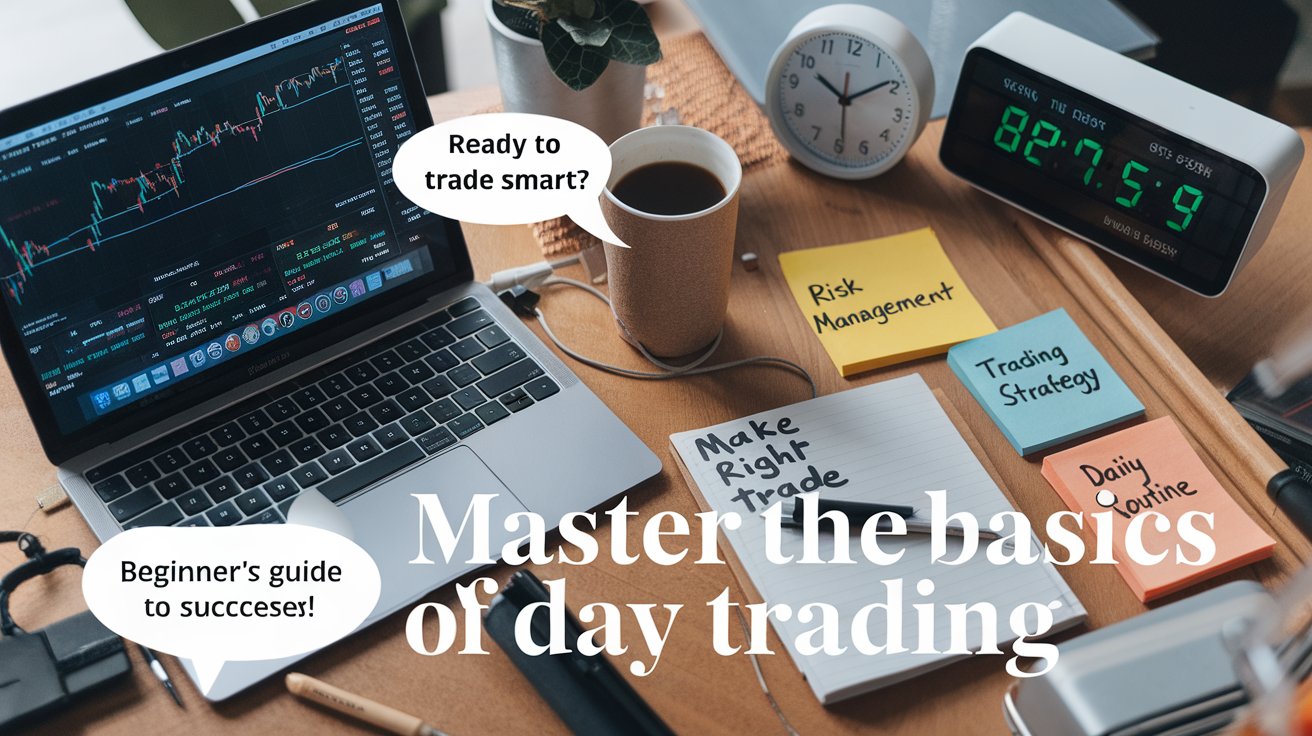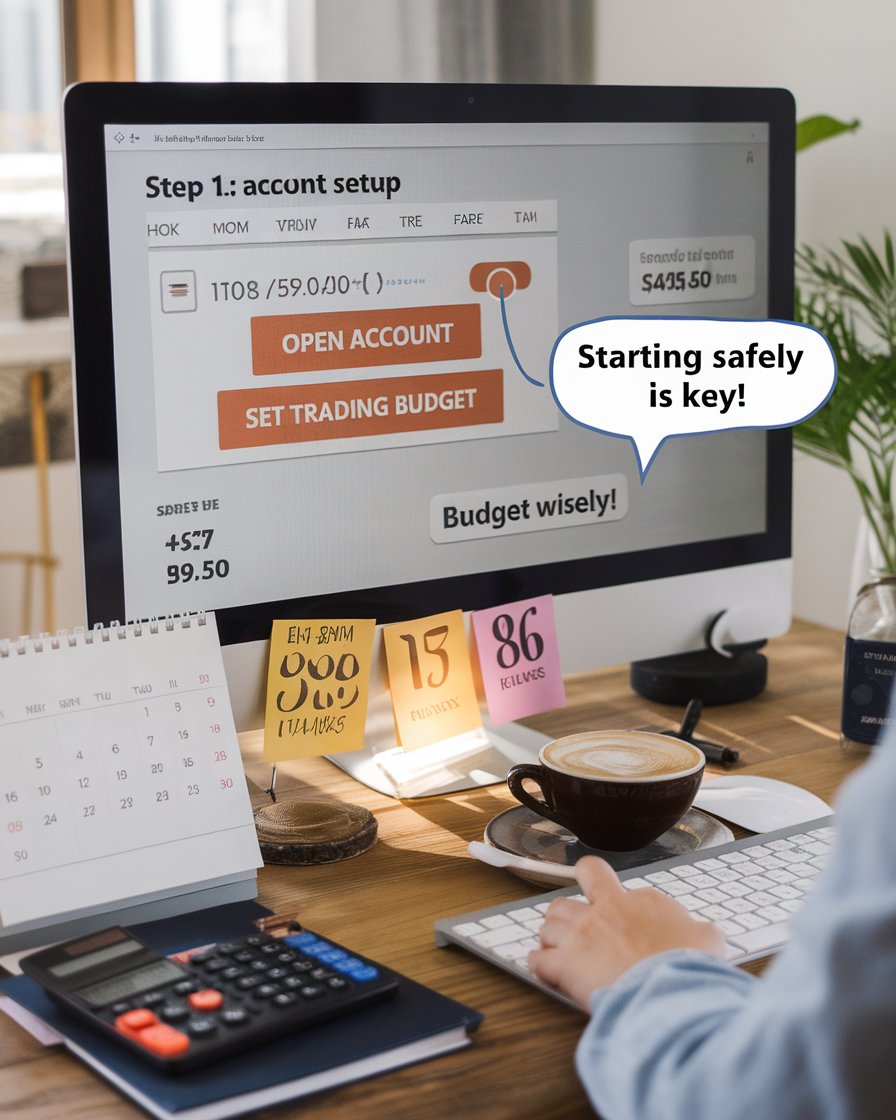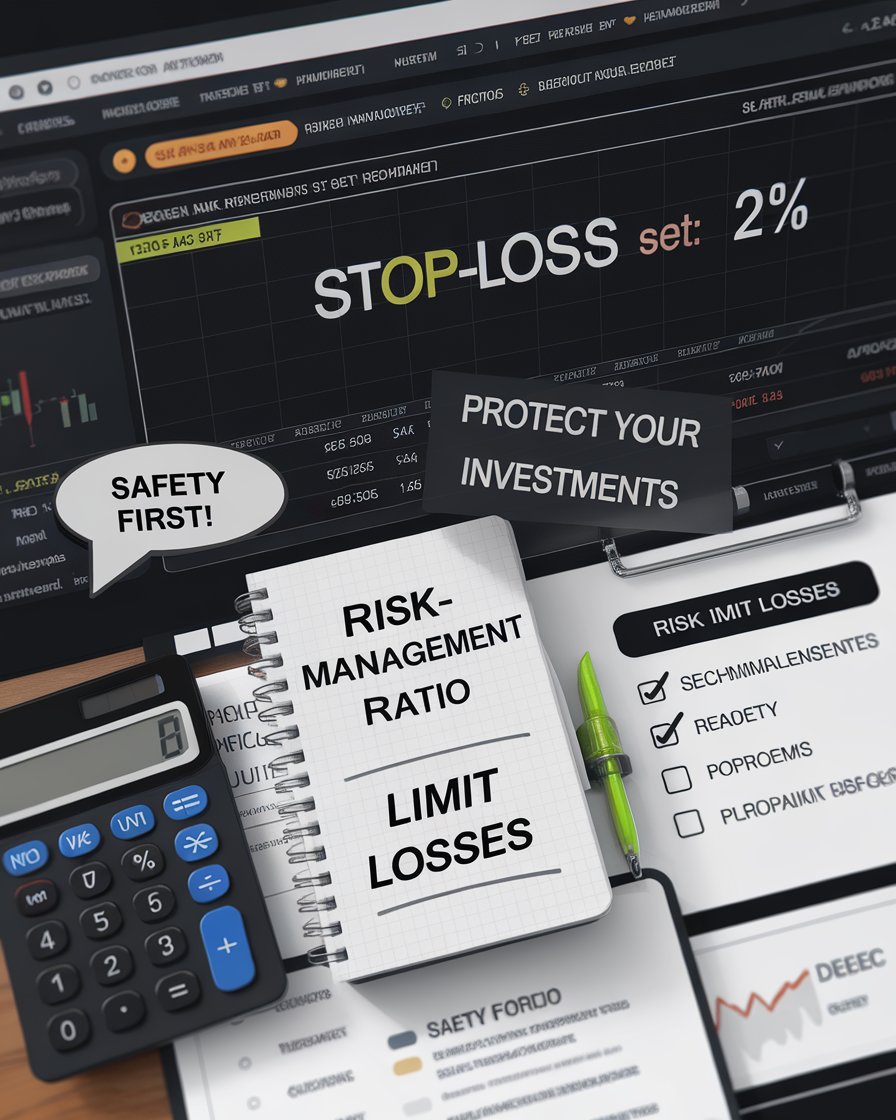Introduction
Day trading can offer a unique opportunity for individuals to engage actively in the financial markets, but it’s also a practice that requires careful planning, disciplined strategies, and a robust understanding of risk. For new day traders, entering the world of buying and selling within the same trading day involves learning core techniques to protect investments and minimize potential losses. Strategies like using stop-loss orders, managing risk-reward ratios, and maintaining realistic profit expectations all contribute to a more balanced and informed approach to day trading.
In this guide, we’ll explore key elements to help beginners start their day trading journey with a focus on safety, efficient time management, and practical trading techniques. From understanding different strategies to establishing a strong trading routine, each section provides insights and tools to help new traders build confidence and make informed decisions in a dynamic market.
Key Takeaways
- Beginners should prioritize selecting a reliable broker and setting up a day trading account suited to their goals.
- Essential day trading strategies, like momentum and swing trading, offer different ways to engage with the market safely.
- Time management and structured routines can significantly improve focus and trading efficiency.
- Leveraging trading tools and resources helps new traders stay informed and streamline decision-making.
- Implementing risk management techniques, such as stop-loss and limit orders, protects investments from significant losses.
- Setting realistic profit expectations and adhering to a risk-reward strategy supports sustainable growth in day trading.
Getting Started Safely with Day Trading
Starting safely in day trading means laying a solid foundation before diving into market activities. New traders should consider selecting a reliable brokerage, setting up an account tailored to day trading, and understanding basic trading rules and requirements. Building awareness of the potential risks and rewards is vital, as day trading demands a balance between strategy and caution. Using resources like trading simulators and educational courses can ease the learning curve, providing a risk-free way to test strategies. As beginners explore trading, focusing on manageable investments can help reduce stress, promoting a gradual path to building trading confidence. This section covers essential steps to kickstart a safer, more prepared journey in day trading.
Choosing the Right Broker for Day Trading
Selecting a broker is a critical first step for day traders, as it directly affects trading speed, fees, and overall experience. New traders should prioritize brokers that offer low commissions, access to advanced trading platforms, and real-time data feeds. Comparing brokerage services and features helps ensure alignment with individual trading goals, as some brokers cater to day trading with specific tools and low latency execution. Additionally, reliable customer support can be invaluable, especially when technical issues arise. By choosing a broker that provides a seamless, supportive environment, beginners can focus on learning the ropes without unnecessary challenges, setting the stage for a more stable day trading journey.
Setting Up a Day Trading Account Effectively
Opening a day trading account requires careful consideration to match the account type with trading needs. Beginners should assess minimum deposit requirements, margin options, and available tools to ensure they’re prepared for real-time trading. For instance, choosing an account with margin trading features might be beneficial for those planning multiple trades per day. Additionally, understanding account restrictions, like the pattern day trader rule, is crucial to avoid penalties. Setting up the account correctly from the start gives traders confidence, knowing they have the right tools and setup to begin trading. This foundation supports growth and reduces potential issues as they dive into the fast-paced world of day trading.
Essential Considerations for Beginner Day Traders
1. Choose a Broker with Day Trading Support
When beginning day trading, selecting a broker that supports real-time data access, low fees, and reliable trading platforms is essential. Look for brokers with solid customer support and features tailored to day traders.
2. Open a Suitable Trading Account
Many brokers offer specialized accounts for day trading, including margin accounts and accounts with fast execution capabilities. Assess account requirements carefully, as features like margin access and minimum deposits can vary widely.
3. Understand the Pattern Day Trader Rule
The pattern day trader rule requires a minimum balance of $25,000 for accounts with frequent day trades. Familiarizing yourself with this rule helps prevent unexpected limitations and penalties on your trading account.
4. Set Aside Dedicated Capital for Trading
Begin with funds specifically set aside for trading, ensuring they are separate from essential savings or expenses. This approach limits financial stress, as only expendable capital is at risk in the trading process.
5. Use a Trading Simulator to Practice
Many brokers and educational platforms offer simulators that allow beginners to trade in a risk-free environment. Using a simulator builds familiarity with trading tools and market behavior without immediate financial exposure.
Essential Day Trading Strategies for New Traders
For beginners, exploring essential day trading strategies can open pathways to understanding market dynamics. Foundational approaches such as swing trading, momentum trading, and news-based trading provide varied ways to approach buying and selling within the same trading day. By familiarizing themselves with these strategies, traders can better gauge the market’s pulse and make informed decisions. Each strategy has unique benefits and risks, from capturing quick profits with momentum trading to holding positions slightly longer with swing trading. For novice traders, practicing these techniques in a simulated environment allows skill-building without immediate financial risk. In this section, readers will discover diverse strategies, each offering distinct opportunities to navigate day trading’s fast-paced environment.
Learning Momentum Trading Basics
Momentum trading is popular among day traders, involving quick decisions based on price movements. This strategy aims to capitalize on stock price changes, requiring traders to stay vigilant for rising or falling trends. Beginners should focus on identifying momentum triggers, like breaking news or sudden market shifts, which can signal profitable trades. While this approach offers fast returns, it requires a clear exit plan to avoid losses when trends shift. For those new to day trading, understanding momentum indicators and practicing with a simulator can help hone quick response times, ultimately building confidence to execute trades efficiently within a single trading day.
Exploring the Benefits of Swing Trading
Swing trading differs from traditional day trading, as it allows traders to hold stocks for a short period, often a few days. This strategy is suited for those who prefer a more measured pace, focusing on price changes over a slightly extended timeline. Swing trading can provide flexibility, giving traders time to analyze broader market trends. Although it’s not strictly within the same trading day, swing trading helps beginners gain insights into stock behavior without the immediacy of pure day trading. For newcomers, exploring swing trading can be a smoother entry into the market, allowing them to build skills with less time pressure.
Case Study: Applying Momentum Trading for Consistent Gains
For new traders, momentum trading offers a practical way to leverage short-term market trends. In this case study, a novice trader named Sarah began exploring momentum trading as a way to enter and exit positions quickly, based on emerging trends and price shifts. Sarah focused on identifying stocks experiencing significant movement due to breaking news or major market events. By observing market conditions and using technical indicators, such as moving averages and volume surges, she pinpointed optimal entry points for trades.
Over time, Sarah developed a disciplined routine for managing trades within a single trading day, allowing her to close positions before the market’s close. With a stop-loss in place for each trade, Sarah minimized losses and learned to avoid trades with unclear trends. Her experience demonstrates how a clear strategy, combined with proper risk management, can build confidence and lead to steady gains over time.
Optimizing Time and Resources for Effective Day Trading
Effective day trading isn’t just about strategies; it’s about efficiently managing time and resources to support wise decision-making. New traders often benefit from developing a structured daily routine that includes designated periods for market analysis, strategy adjustments, and trading. Choosing a user-friendly trading platform is essential, as reliable access to real-time data and alerts can be critical in a fast-moving market. Leveraging resources like trading tools, news feeds, and educational platforms can keep traders informed and adaptable. By optimizing their approach to time and resources, beginners can reduce stress and focus more on honing their trading skills. This section highlights the benefits of time management and resource allocation for successful trading.
Setting a Daily Routine for Day Trading Success
A structured daily routine helps traders stay organized and focused, setting a schedule for market analysis, trading, and review. For beginners, dedicating time each day to study charts, news, and strategies is crucial for building confidence. Traders often start their routine by reviewing overnight market changes, preparing for the day’s potential trades. Having a plan for each part of the trading day improves focus, helping traders avoid impulsive decisions. By practicing time-blocked sessions, new traders can develop productive habits, focusing on essential tasks without becoming overwhelmed. This routine ultimately supports more informed decision-making and consistent trading.
Leveraging Trading Tools for Time Efficiency
Trading tools and platforms offer features that save time and enhance precision, from charting software to news alerts. Many day traders use alerts for stock price fluctuations, reducing the need for constant monitoring. Beginners can also use technical analysis tools, like moving averages, to understand price trends. These tools not only provide insights but also streamline workflows by flagging key changes in real time. By using trading tools strategically, new traders can free up mental space to concentrate on analyzing and refining their strategies. Effective tool use helps minimize stress and increase efficiency in day trading.
The stock market is a device for transferring money from the impatient to the patient.” – Warren Buffett
Implementing Risk Management Techniques to Protect Investments
Risk management is fundamental in day trading, acting as a safeguard against potential losses. New traders can benefit from techniques like setting stop-loss orders, which limit losses on each trade by automatically closing a position at a predetermined price. Additionally, understanding risk-to-reward ratios and limiting the size of individual trades can prevent significant losses. Establishing realistic profit expectations also helps traders maintain composure, especially in volatile markets. For beginners, practicing disciplined risk management early can instill habits that lead to sustainable trading. This section covers essential risk management techniques, reinforcing the importance of protecting investments as part of a responsible trading approach.
Setting Stop-Loss and Limit Orders for Safety
Stop-loss and limit orders act as safety nets in day trading, limiting losses and controlling the risks of trades. A stop-loss order, for example, automatically closes a position when it reaches a specific price, helping traders avoid larger-than-expected losses. Limit orders, on the other hand, help ensure that traders buy or sell stocks at their target prices, reducing the risk of unwanted price changes. For beginners, using these types of orders can make the trading experience less stressful, fostering a more disciplined and planned approach. These tools are critical for maintaining control in a fluctuating market environment.
Establishing Risk-Reward Ratios in Trading Plans
A risk-reward ratio allows traders to evaluate the potential gain against the risk in a trade, helping guide investment choices. Commonly, traders aim for a 1:2 or 1:3 ratio, meaning the profit target is two or three times greater than the possible loss. This approach helps ensure that winning trades compensate for losses, even when success rates vary. Beginners can benefit by setting clear risk-reward ratios for each trade, aligning expectations with market realities. This disciplined approach reduces impulsive trading and fosters a mindset focused on sustainable profits, rather than chasing quick wins.
Conclusion
Day trading offers the potential for financial gains, but it also requires a disciplined approach and a solid understanding of market dynamics. For beginners, establishing clear strategies and applying risk management techniques—such as stop-loss orders and well-defined risk-reward ratios—can be essential to a sustainable day trading experience. By setting realistic goals and focusing on gradual growth, new traders can protect their investments and navigate the challenges that come with intraday trading.
As you continue on your day trading journey, remember that success is often built through careful planning, continuous learning, and mindful management of time and resources. By incorporating these practices, traders can build a foundation that not only enhances their market knowledge but also strengthens their ability to make thoughtful and profitable trading decisions.
















